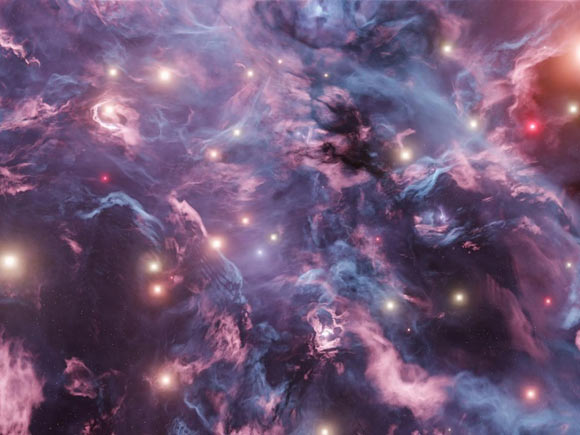New research led by the University of California, Irvine addresses a fundamental debate in astrophysics: Does invisible dark matter need to exist to explain how the Universe works the way it does, or can physicists explain how things work based solely on the matter we can directly observe?

Dark photons are hypothetical dark sector particles proposed as a force carrier similar to the photon of electromagnetism but potentially connected to dark matter. Image credit: University of Adelaide.
“Our paper shows how we can use real, observed relationships as a basis to test two different models to describe the Universe,” said Dr. Francisco Mercado, a postdoctoral researcher at Pomona College.
“We put forth a powerful test to discriminate between the two models.”
“The test involved running computer simulations with both types of matter — normal and dark — to explain the presence of intriguing features measured in real galaxies.”
“The features in galaxies we found are expected to appear in a universe with dark matter but would be difficult to explain in a universe without it.”
“We show that such features appear in observations of many real galaxies. If we take these data at face value, this reaffirms the position of the dark matter model as the one that best describes the Universe we live in.”
These features describe patterns in the motions of stars and gas in galaxies that seem to only be possible in a universe with dark matter.
“Observed galaxies seem to obey a tight relationship between the matter we see and the inferred dark matter we detect, so much so that some have suggested that what we call dark matter is really evidence that our theory of gravity is wrong,” said University of California, Irvine’s Professor James Bullock.
“What we showed is that not only does dark matter predict the relationship, but for many galaxies it can explain what we see more naturally than modified gravity.”
“I come away even more convinced that dark matter is the right model.”
The features also appear in observations made by proponents of a dark matter-free universe.
“The observations we examined — the very observations where we found these features — were conducted by adherents of dark matter-free theories,” said Dr. Jorge Moreno, a researcher at Pomona College.
“Despite their obvious presence, little-to-no analysis was performed on these features by that community.”
“It took folks like us, scientists working with both regular and dark matter, to start the conversation.”
“We expect debate within our research community to follow in the wake of the study, but that there may be room for common ground, as we also found that such features only appear in our simulations when there is both dark matter and normal matter in the Universe.”
“As stars are born and die, they explode into supernovae, which can shape the centers of galaxies, naturally explaining the existence of these features.”
“Simply put, the features we examined in observations require both the existence of dark matter and the incorporation of normal-matter physics.”
Now that the dark matter model of the Universe appears to be the leading one, the next step is to see if it remains consistent across a dark matter universe.
“It would be interesting to see if we could use this same relationship to even distinguish between different dark matter models,” Dr. Mercado said.
“Understanding how this relationship changes under distinct dark matter models could help us constrain the properties of dark matter itself.”
The paper was published online in the Monthly Notices of the Royal Astronomical Society.
_____
Francisco J. Mercado et al. Hooks & Bends in the radial acceleration relation: discriminatory tests for dark matter and MOND. MNRAS 530 (2): 1349-1362; doi: 10.1093/mnras/stae819

